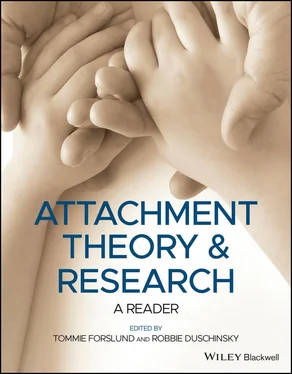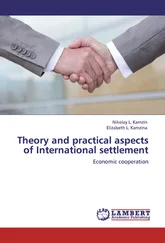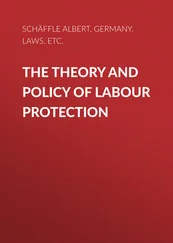Most other workers conceive anxiety in ways similar to that advanced here. Thus Goldstein (1939) contrasts it with fear and postulates that anxiety is experienced when the organism is unable to cope with a situation and, as a result, is in danger of disorganization. This is a concept to which we shall be returning in a paper to follow in which the nature of depression will be discussed. Recently Gerard (1958), approaching the problem from the point of view of neurophysiology, has remarked: ‘Anxiety is largely connected with frustrated drives … with unfinished business … with events to come.’ Like Goldstein, he emphasizes uncertainty and the unsolved nature of the problem. Several writers, on the other hand, for example McDougall (1923) and Basowitz et al . (1955), whilst agreeing in general approach, seem to me in their description to be too preoccupied with behaviour dependent on foresight (and therefore with expectant anxiety) and to give too little attention to the more primitive processes underlying primary anxiety. McDougall in fact uses the term ‘anxiety’ as synonymous with ‘expectant anxiety’, and the term ‘fear’ to denote what I am terming ‘fright’.
1 Abraham, K. ([1911] 1927) Notes on the psycho‐analytical investigation and treatment of manic‐depressive insanity and allied conditions. In: Selected Papers on Psycho‐Analysis. London: Hogarth
2 Anthony, E. J. (1956) The significance of Jean Piaget for child psychiatry. British Journal of Medical Psychology, 29, 20–34
3 Anthony, S. (1940) The Child’s Discovery of Death. London: Kegan Paul
4 Balint, M. (1952) New beginning and the paranoid and the depressive syndromes. In: Primary Love and Psycho‐Analytic Technique. London: Hogarth
5 Basowitz, H. et al. (1955) Anxiety and Stress: an Interdisciplinary Study of a Life Situation. New York: McGraw Hill
6 Bastock, M., Morris, D., & Moynihan, M. (1953) Some comments on conflict and thwarting in animals. Behaviour, 6, 66–84
7 Bender, L., & Yarnell, H. (1941) An observation nursery: a study of 250 children on the psychiatric division of Bellevue Hospital. American Journal of Psychiatry, 97, 1158–72
8 Benedek, T. (1946) Insight and Personality Adjustment: A Study of the Psychological Effects of War. New York: Ronald Press
9 Bernfeld, S. ([1925] 1929) The Psychology of the Infant. London: Kegan Paul.
10 Bowlby, J. (1940) The influence of early environment in the development of neurosis and neurotic character. International Journal of Psychoanalysis, 21, 154–178
11 Bowlby, J. (1944) Forty‐four juvenile thieves: their characters and home life. International Journal of Psychoanalysis 25, 19–52 and 107–127
12 Bowlby, J. (1951) Maternal Care and Mental Health W.H.O. Monograph, No. 2. London: HMSO
13 Bowlby, J. (1953) Some pathological processes set in train by early mother‐child separation. Journal of Mental Science, 99, 265–272
14 Bowlby, J. (1954) Psychopathological processes set in train by early mother‐child separation. In: Proceedings of Seventh Conference on Infancy and Childhood March, 1953. New York: Josiah Macy, Jr., Foundation
15 Bowlby, J. (1957) An ethological approach to research in child development. British Journal of Medical Psychology, 30, 230–240
16 Bowlby, J. (1958) The nature of the child’s tie to his mother. International Journal of Psychoanalysis, 39, 350–373
17 Burlingham, D. & Freud, A. (1942) Young Children in War Time. London: Allen and Unwin
18 Burlingham, D. & Freud, A. (1944) Infants without Families. London: Allen and Unwin
19 Deutsch, H. (1937) Absence of grief. Psychoanalytic Quarterly, 6, 12–22
20 Dixon, J. J., De Monchaup, C., & Sandler, J. (1957) Patterns of anxiety: an analysis of social anxieties. British Journal of Medical Psychology, 30, 107–112
21 Edelston, H. (1943) Separation anxiety in young children: a study of hospital cases. Genetic Psychology Monographs, 28, 3–95
22 Erikson, E. H. (1950) Childhood and Society. New York: Norton
23 Fairbairn, W. R. D. ([1941] 1952) A revised psychopathology of the psychoses and psychoneuroses. In: Psycho‐Analytic Studies of the Personality. London: Tavistock
24 Fairbairn, W. R. D. ([1943] 1952) The war neuroses: their nature and significance. In: Psycho‐Analytic Studies of the Personality. London: Tavistock
25 Fairbairn, W. R. D. ([1951] 1952) A synopsis of the development of the author’s views regarding the structure of the personality. In: Psycho‐Analytic Studies of the Personality. London: Tavistock
26 Freud, A. (1952) The mutual influences in the development of ego and id. Psychoanalytic. Study of the Child, 7, 42–50
27 Freud, A. (1953) Some remarks on infant observation. Psychoanalytic Study of the Child, 8, 9–19
28 Freud, S. (1894). The neuro‐psychoses of defence. The Standard Edition of the Complete Psychological Works of Sigmund Freud, Volume III (pp. 41–61), London: Vintage
29 Freud, S. ([1897] 1954) ‘Notes III’ in The Origins of Psycho‐Analysis: Letters to Wilhelm Fliess, Drafts and Notes, 1887–1902, New York: Kessinger Publishing
30 Freud, S. (1905). Three essays on the theory of sexuality. The Standard Edition of the Complete Psychological Works of Sigmund Freud, Volume VII (pp. 123–246), London: Vintage
31 Freud, S. (1909). Analysis of a phobia in a five‐year‐old boy. The Standard Edition of the Complete Psychological Works of Sigmund Freud, Volume X (pp. 1–150), London: Vintage
32 Freud, S. (1917). Mourning and melancholia. The Standard Edition of the Complete Psychological Works of Sigmund Freud, Volume XIV (pp. 237–258), London: Vintage
33 Freud, S. (1917). Introductory lectures on psycho‐analysis. The Standard Edition of the Complete Psychological Works of Sigmund Freud, Volume XVI (pp. 241–463), London: Vintage
34 Freud, S. (1920). Beyond the pleasure principle. The Standard Edition of the Complete Psychological Works of Sigmund Freud, Volume XVIII (pp. 1–64), London: Vintage
35 Freud, S. (1926). Inhibitions, symptoms and anxiety. The Standard Edition of the Complete Psychological Works of Sigmund Freud, Volume XX (pp. 75–176), London: Vintage
36 Gerard, R. W. (1958). Anxiety and tension. Bulletin of the New York Academy of Medicine, 34 (7), 429–444
37 Goldfarb, W. (1943) Infant rearing and problem behavior. American Journal of Orthopsychiatry, 13, 249–265
38 Goldstein, K. (1939) The Organism. New York: American Book Co.
39 Greenacre, P. ([1941] 1952) The predisposition to anxiety. In: Trauma, Growth and Personality. New York: Norton
40 Greenacre, P. ([1945] 1952) The biological economy of birth. In: Trauma, Growth and Personality. New York: Norton
41 Greenacre, P. ([1945] 1952) Conscience in the psychopath. In: Trauma, Growth and Personality. New York: Norton
42 Greenacre, P. (1952) Trauma, Growth and Personality. New York: Norton
43 Harlow, H. F. (1958) The nature of love. American Psychologist, 13, 673–685
44 Harlow, H. F. & Zimmermann, R. R. (1958) The development of affectional responses in infant monkeys. Proceedings of the American Philosophical Society, 102, 501–509
45 Hayes, C. (1951) The Ape in our House. New York: Harper
46 Heinicke, C. M. (1956) Some effects of separating two‐year‐old children from their parents: a comparative study. Human Relations, 9, 105–176
47 Heinicke, C. M. (1957) The effects of separating two‐year‐old children from their parents: a comparative study. Paper read at the International Congress of Psychology, Brussels.
48 Hermann, I. (1936). Sich‐Anklammern—Auf‐Suche‐Gehen: Über ein in der Psychoanalyse bisher vernachlässigtes Triebgegensatzpaar und sein Verhältnis. Internationale Zeitschrift für Psychoanalyse, 22 (3), 349–370
Читать дальше












